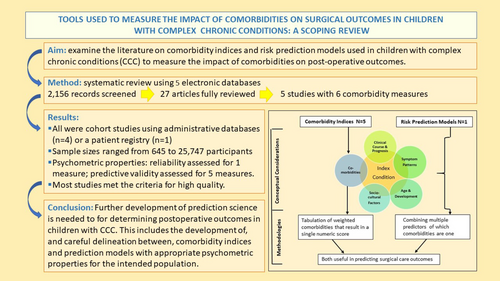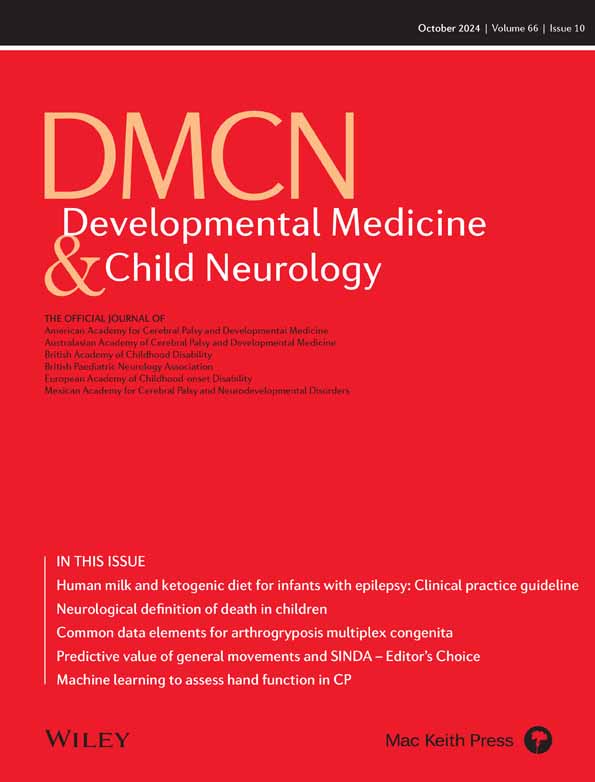Tools used to measure the impact of comorbidities on surgical outcomes in children with complex chronic conditions: A scoping review
Abstract
Aim
To identify and describe assessment tools used to measure the impact of comorbidities on postoperative outcomes in children with complex chronic conditions (CCC).
Method
This was a scoping review using five electronic databases. The search was conducted in March 2022 by a medical librarian. There were no date or language restrictions. Included studies were full-text articles published in peer-reviewed journals that described a tool used to measure the impact of comorbidities in children with CCC to assess postoperative outcomes. A standardized data charting tool was used.
Results
A total of 2157 articles were retrieved. Five studies reporting on six comorbidity measures met inclusion criteria. All were cohort studies and were secondary analyses of data from an administrative database (n = 4) or a patient registry (n = 1). Sample sizes ranged from 645 to 25 747 participants. One paper described the assessment of reliability. Only one form of validity – predictive validity – was assessed in three papers for five measures.
Interpretation
Findings from this scoping review revealed a paucity of comorbidity assessment tools validated for use with children with CCC; significant conceptual and measurement challenges exist in the current scientific literature.
What this paper adds
- Five studies used formal risk assessment approaches to evaluate postoperative outcomes in children with complex chronic conditions.
- Conceptual and methodological differences between comorbidity indexes and risk prediction models are explicated.
- Further development of prediction science is needed for determining postoperative outcomes.
- Enhanced preoperative comorbidity assessment will identify children at risk of poor outcomes.
What this paper adds
- Five studies used formal risk assessment approaches to evaluate postoperative outcomes in children with complex chronic conditions.
- Conceptual and methodological differences between comorbidity indexes and risk prediction models are explicated.
- Further development of prediction science is needed for determining postoperative outcomes.
- Enhanced preoperative comorbidity assessment will identify children at risk of poor outcomes.
This scoping review identified all studies that used tools to measure the impact of comorbidities on surgical outcomes in children with complex chronic conditions. Five studies utilizing six measures were included in the review. Despite the majority of studies meeting criteria for being of high quality, they are in the early stages of their development and lack external validation when applied to children with complex chronic conditions.
CONFLICT OF INTEREST STATEMENT
The authors have stated that they had no interests that might be perceived as posing a conflict or bias.
Open Research
DATA AVAILABILITY STATEMENT
The data that support the findings of this study are available from the corresponding author upon reasonable request.





